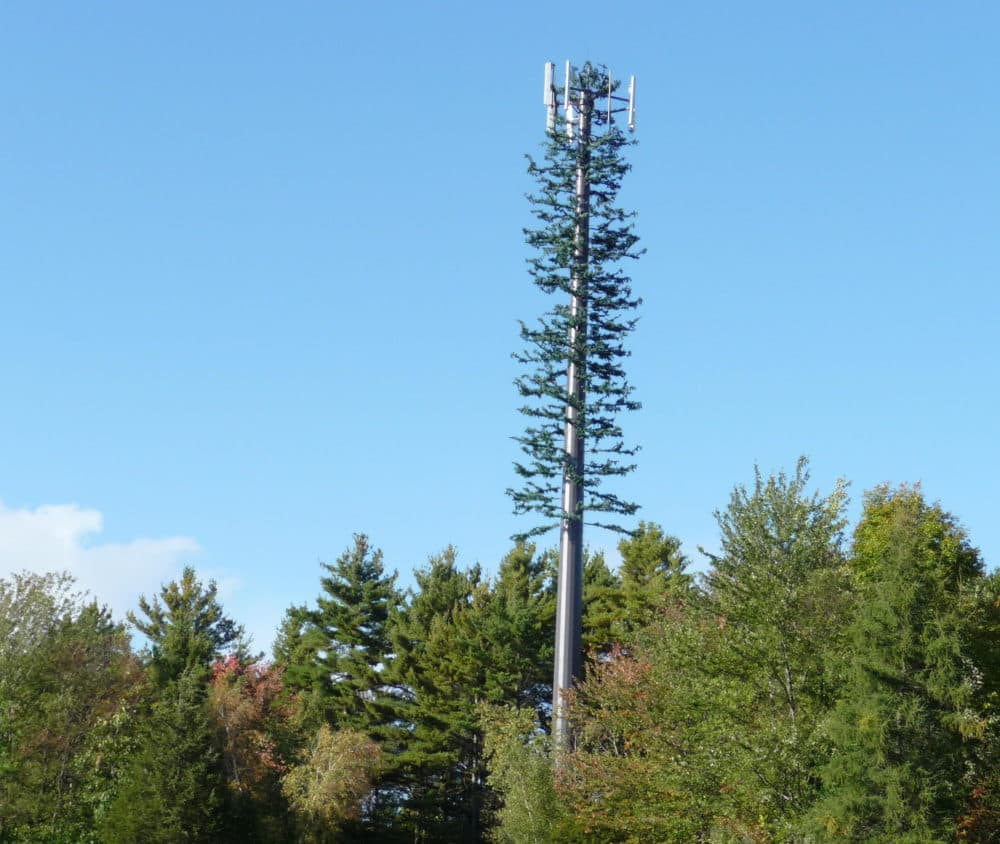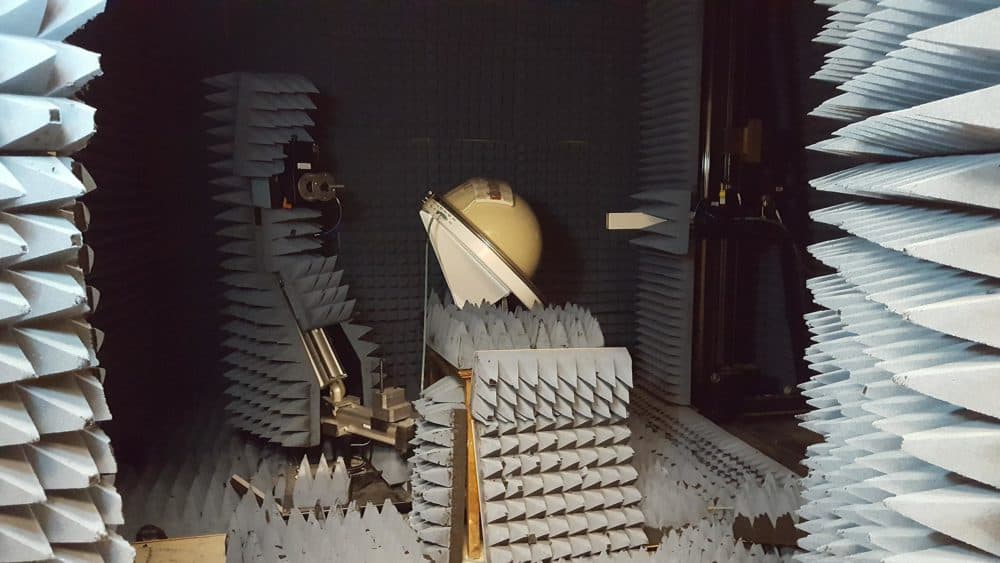Advertisement
The Road To 5G Cell Service Runs Through Western Massachusetts

Americans' wireless data consumption has skyrocketed since 4G technology was introduced nearly a decade ago.
Smartphones have become essential for on-the-go work and entertainment, fueling the need for 5G.
But how do you create a cellular network that accommodates everything from streaming services to self-driving cars? The answer may lie in the basement of a UMass Amherst laboratory.
That's where doctoral student Chris Merola is trying to create more efficient cell towers.
In the lab, Merola uses a special, foam-covered chamber to test a prototype for the California-based startup Cohere Technologies.
“That big dome is a lens antenna,” Merola said, gesturing toward the device. “There are a couple of different squares [on the back], so each one of those is an antenna.”
Merola's design is an example of Massive MIMO technology, short for multiple input, multiple output.

Traditional cell towers spread data outward in a single, 360-degree blob. This watermelon-sized prototype splits the data into several narrow beams that broadcast independently.
Multi-beam antennas have been used in the past for defense applications, but are just getting their start in commercial telecom. You might have seen them used in certain sports stadiums. Clustered on top of a pole, this system would do the work of dozens of normal antennas, increasing available bandwidth.
“If you have more bandwidth, you can push more data through it,” Merola said. “Everyone can stream their videos, or do whatever we will be doing in 10 or 20 years, with our phones or devices or immersive virtual realities.”
But the data waves themselves could also be the answer.
Modern cellphones typically operate at a frequency between .2 and 8 gHz, but if you move up the electromagnetic spectrum to anywhere between 30 and 300 gHz, you'll find what many consider the golden ticket of 5G technology: millimeter waves.
Advertisement
These tight wavelengths can carry massive amounts of data fast, and they've actually been in use for a long time.
Millitech, a Northampton company that specializes in millimeter wave technology, has been working on military and aerospace projects for nearly 40 years. But like multi-beam antennas, it's new territory for the telecom industry.
“One of the problems with millimeter waves, or challenges with millimeter wave technology, is the fact that it's such a high frequency, that it can be blocked by just about anything,” said Jim McGregor, principal analyst of TIRIAS Research, a technology advisory firm based in Arizona. “It can be blocked by your hand. It can be blocked by a leaf blowing in the wind. It can be blocked by just about anything. The higher you go in frequency, the easier it is to block.”
But carriers could leverage the same beam-forming technology used in Merola's antennas to overcome the interference problem.
“In some cases, they can actually bounce the beam off other objects,” McGregor said. “So: bouncing it off a building, bouncing it off a window, off a wall, so that you can still use the millimeter wave, even if it's partially blocked.”
Beam-forming solutions could mean big things for the millimeter wave market. By 2023, it's expected to grow anywhere from 400 to 800 percent, depending on the forecaster.
Merola, who was a Millitech engineer for three years before returning to UMass Amherst for his doctorate, agrees that a marriage between the telecom and millimeter wave industries is inevitable. But the timeline for that, and its relationship to 5G, is far from certain.
“People have been drawing these millimeter-wave hockey-stick year-over-year growth rates for at least a decade, and it hasn't materialized yet,” Merola said.
In Merola's mind, the road to 5G begins with those multi-beam antennas he's testing in the UMass lab.
By developing smaller versions of the Silicon Valley prototype — think a slice of watermelon instead of the whole fruit — Merola said that we can achieve 5G standards with normal frequencies first.
"Eventually, the millimeter wave will start to fill in," he said. "In my opinion, the exponential growth is more than five years out. It's coming, but it's a little ways."
So this is the way 4G ends — not with a bang, but a multi-beam antenna.
This story originally appeared on New England Public Radio.
This segment aired on October 9, 2018.